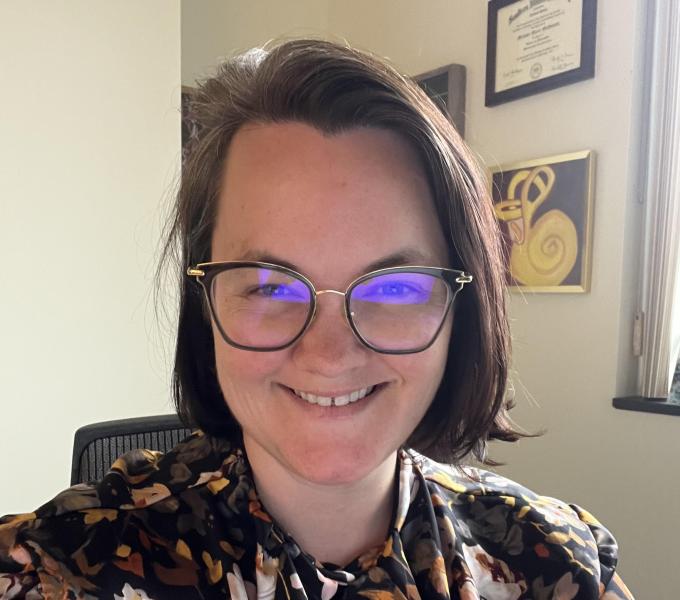- PhD Pharmacology Southern Illinois University 2017
Education & Training
Understanding the molecular and genetic pathways towards hearing restoration. The McGovern Lab investigates the potential of the mammalian inner ear to regenerate following the loss of sensory cells that detect and transduce sound from the environment to the brain. These highly specialized cells are critical for our perception of the auditory world, but, unlike birds and fish, the mammalian inner ear has a very limited capacity to regenerate these cells and only early in development. The mature organ does not have any known capacity to naturally regenerate lost cells, and, therefore, our lab deploys transcription factors in order to reprogram lost sensory cells from their neighbors that remain in the ear. We use genetically modified mouse lines that modify gene expression in cochlear cells and investigate these through high resolution fluorescence histology and molecular genetic mechanisms. We are interested in understanding the circumstances necessary to reprogram non-hair cells into functional hair cells so that we can begin to design gene therapies for hearing restoration.
McGovern, M.M., Ghosh, S., Walters, B.J., Groves, A.K. (2024) Reprogramming with Atoh1, Gfi1, and Pou4f3 promotes hair cell regeneration in the adult organ of Corti. PNAS Nexus, 3;10
McGovern, M.M., Niu, Y., Hosamani, I., Nguyen, K., Zong, C., Groves, A.K. (2024) Expression of Atoh1, Gfi1, and Pou4f3 in the mature cochlea reprograms non- sensory cells into hair cells. Proc. Natl. Acad. Sci. 121 (5) e2304680121
McGovern, M.M., Hartman, B., Thawani, A., Maunsell, H.R., Zhang, H., Heller, S., Stone, J., Groves, A.K. (2023) Fbxo2 CreERT2 : A new model for targeting cells in the neonatal and mature inner ear. Hearing Research 428:108686
Iyer, A., Hosamani, I., Nguyen, J.D., Cai, T., Singh, S., McGovern, M.M., Beyer, L.A., Zhang, H., Jen, H.-I, Yousaf, R., Birol, O., Sun, J., Ray, R.S., Raphael, Y., Segil, N., Groves, A.K. (2022). Cellular reprogramming with ATOH1, GFI1, and
POU4F3 implicate epigenetic changes and cell-cell signaling as obstacles to hair cell regeneration in mature mammals. eLife, 11:e79712.
Teng-Wei Huang, Amrita Iyer, Jeanne Manalo, Junsung Woo, Navish Bosquez Huerta, Melissa McGovern, Heinrich Schrewe, Fred Pereira, Andrew K Groves, Kevin Ohlemiller, and Benjamin Deneen. (2021) Glial-Specific Deletion of Med12 Results in Rapid Hearing Loss via Degradation of the Stria Vascularis. J. Neurosci 41(34) 7171-7181
Gnedeva, L., Wang, X., McGovern, M.M., Tao, L., Trecek, T., Llamas, J., Makmura, W., Monroe, T., Martin, J.F., Groves, A.K., Warchol, M., Segil, N. (2020) Organ of Corti size is governed by Yap/Tead-mediated progenitor self-renewal. Proc Natl Acad Sci 117(24): 13552-13561
McGovern, M.M., Randle, M.R., Graves, K.A., Cuppini., C., & Cox, B.C. (2019) Multiple supporting cell subtypes are capable of spontaneous hair cell regeneration in the neonatal mouse cochlea. Development 146: 1-13
McGovern, M.M., Zhou, L., Randle, M.R., & Cox, B.C. (2018) Spontaneous Hair Cell Regeneration is Prevented by Increased Notch Signaling in Supporting Cells Front Cell Neurosci 12:1-17
McGovern, M.M., Brancheck, J.B., Grant, A.C., Graves, K.A., & Cox, B.C. (2017) Quantitative Analysis of Supporting Cell Subtype Labeling among CreER Lines in the Neonatal Mouse Cochlea. J Assoc Res Otolaryngol 18(2): 227-245
